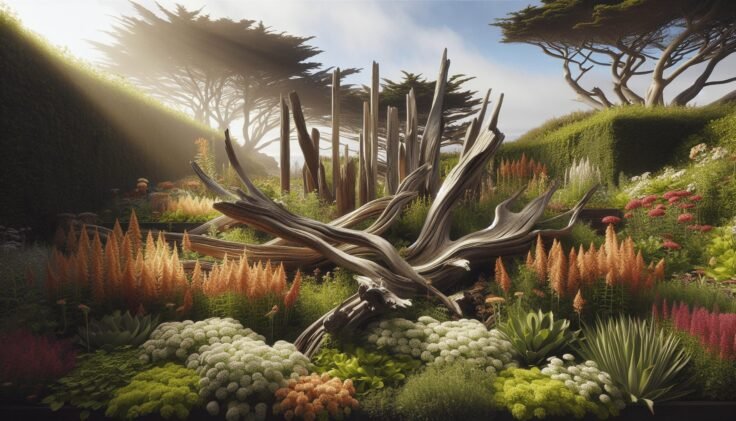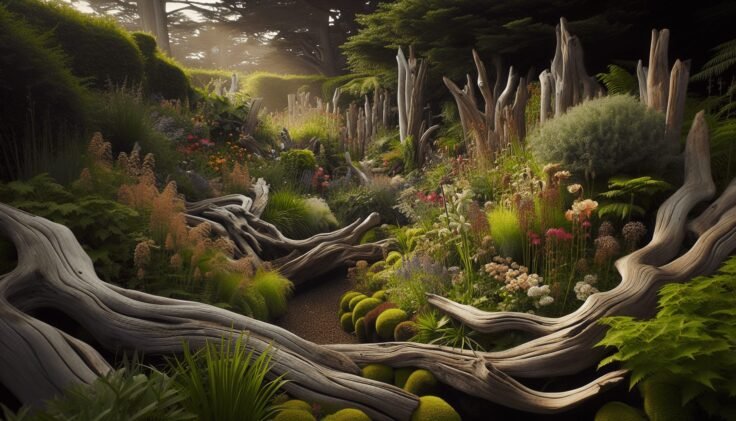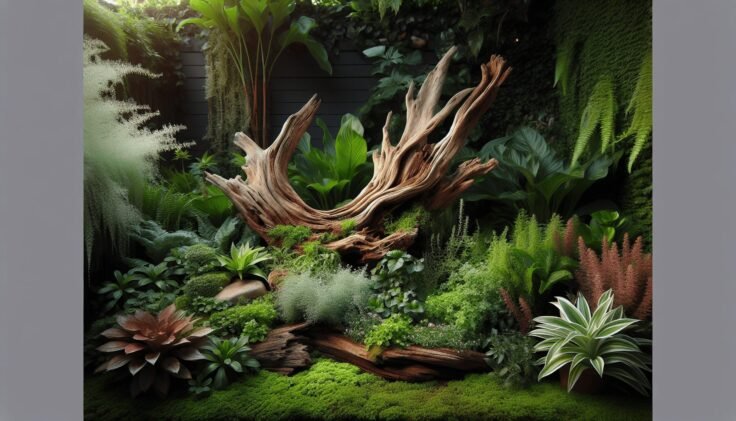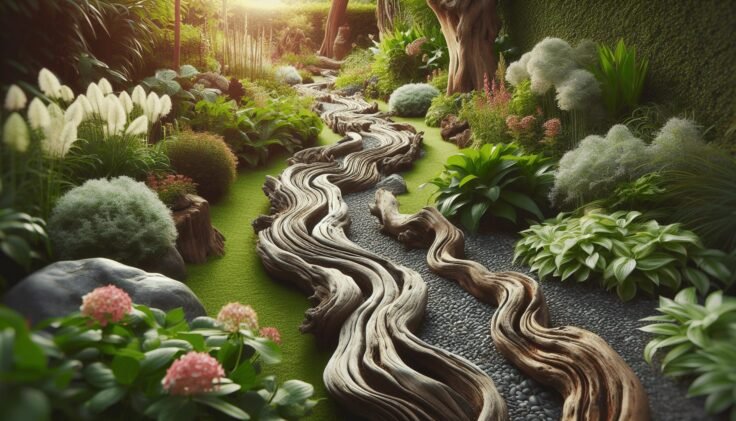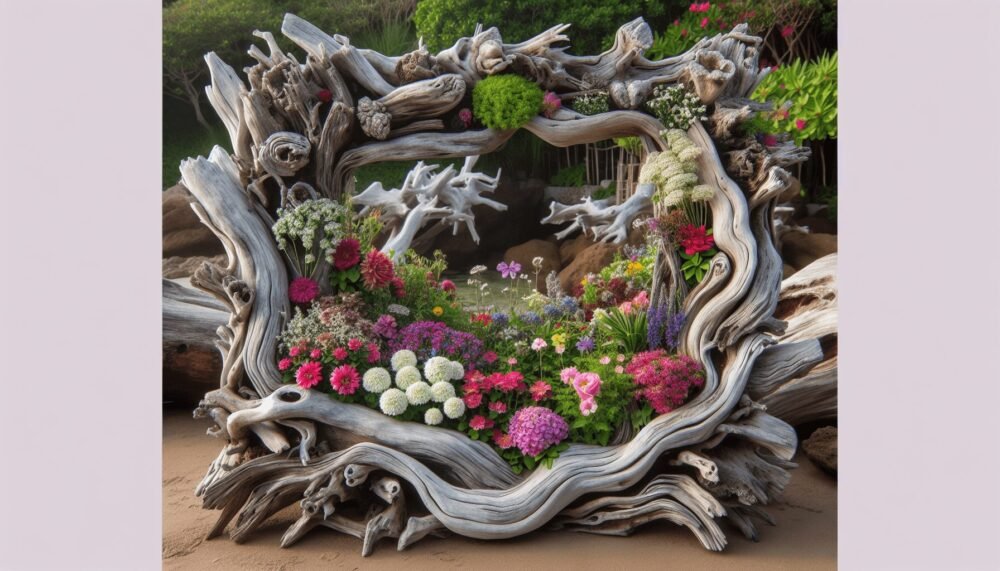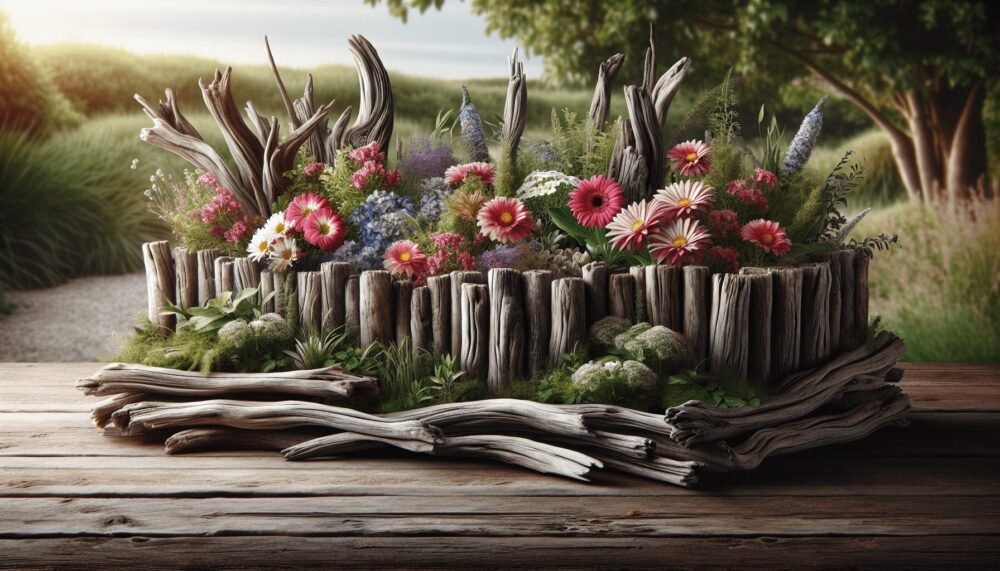Have you ever wandered along a serene beach, admiring the intricate beauty of driftwood? Your next landscaping project might be calling for a touch of nature’s artistry by integrating driftwood into your outdoor design. Driftwood landscaping combines the natural, weathered appeal of driftwood with the lushness and life of your garden or yard. By doing so, you can create a unique and captivating outdoor space that not only reflects your personality but also introduces tactile interest and sustainable design elements.
Understanding Driftwood Landscaping
Before you embark on the journey of transforming your garden with driftwood, it’s important to understand what driftwood landscaping entails. This practice incorporates pieces of driftwood that have been naturally weathered and shaped by the elements into your outdoor spaces to create natural, rustic beauty. More than just pieces of wood, driftwood can be seen as natural sculptures or architecture that enhance the aesthetics of any area. It’s not only about beauty, though; using driftwood is a sustainable option as it involves repurposing materials that are readily available in nature.
What is Driftwood?
Driftwood refers to wood that has been carried by rivers, lakes, or oceans to shorelines, bays, and beaches. Over time, the wood becomes bleached and smoothed by natural elements such as the sun, wind, and tides, resulting in various shapes and textures. The uniqueness of each piece of driftwood lies in its natural history and the journey it has taken to reach your hands.
Benefits of Using Driftwood in Your Landscaping
Incorporating driftwood into your landscaping offers numerous benefits. Apart from being sustainable and eco-friendly, driftwood is versatile and unique. No two pieces are alike, which gives your landscape character and uniqueness. Additionally, driftwood is durable and resistant to insects and rot due to its time in water, making it a suitable material for outdoor use.
Designing Your Driftwood Landscape
Creating a driftwood landscape requires careful planning and creativity. It’s about finding the balance between the natural elegance of driftwood and the existing features of your garden or yard. Start by envisioning the overall design and how the driftwood will enhance the aesthetic appeal of the space.
Choosing the Right Pieces
Selecting the right pieces of driftwood for your landscape design is crucial. Consider the size, shape, and texture of each piece. Larger pieces can serve as focal points or serve functional purposes such as benches or tables, while smaller pieces can be used as decorative accents or edging for garden beds.
Placement and Arrangement
Once you’ve chosen your driftwood, think about how you will arrange and position each piece. Use them to complement the natural layout of your garden, perhaps by placing them near existing trees, water features, or flower beds. Try layering different sizes and shapes to create visual depth and interest.
Complementary Elements
Driftwood pairs beautifully with other natural materials, such as stones, shells, and plants. Consider incorporating these elements into your design to create a cohesive and harmonious look. For example, you might use stones to create a pathway that meanders through your garden around strategically placed pieces of driftwood, or scatter shells and pebbles around the base of driftwood sculptures.
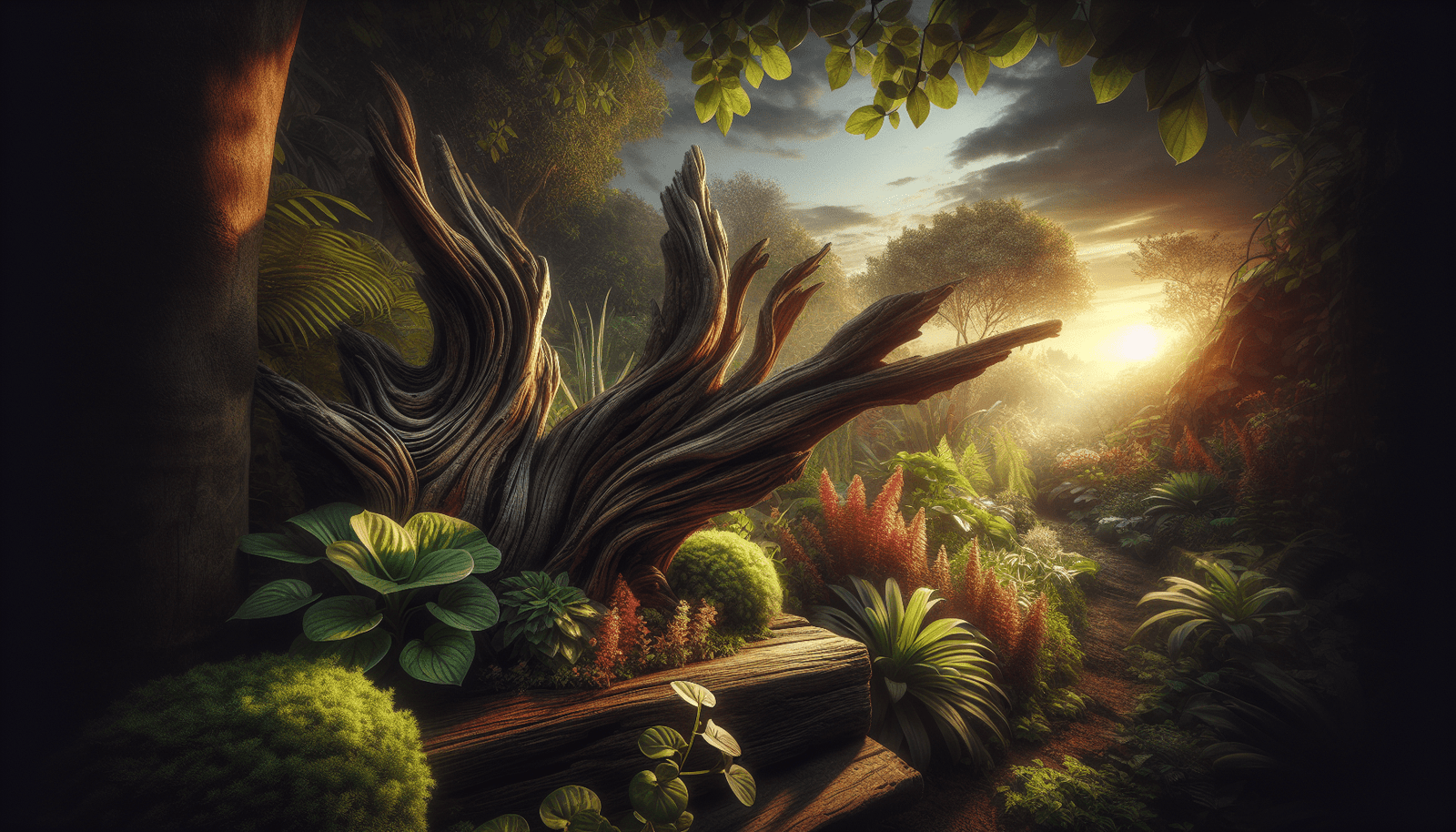
Practical Applications of Driftwood in Landscaping
Driftwood is incredibly versatile and can be used in a variety of practical ways in your outdoor space. Understanding its applications will help you decide how best to incorporate it into your own landscape.
Driftwood Walkways and Borders
Driftwood can be used to create unique walkways and borders around garden areas. By arranging pieces of driftwood horizontally, you can define a path that leads through your garden, inviting exploration and providing clear boundaries.
Driftwood Sculptures and Art
Driftwood naturally forms into beautiful sculptures. Use larger pieces as standalone art installations within your garden, or create smaller art pieces that can be hung from trees or trellises. You might even try your hand at DIY artwork, assembling pieces into creative shapes and designs.
Water Features and Driftwood
The combination of water elements and driftwood can be especially striking. Consider incorporating driftwood into an existing pond or fountain. Let it serve as a bridge or stepping stones, or use it to construct a frame or backdrop for your water feature.
Driftwood Planters
Create unique planters by hollowing out pieces of driftwood to house your favorite plants or succulents. These planters can be used as centerpieces on tables, hung along fences, or placed strategically around your yard to add texture and intrigue.
Caring for Your Driftwood Landscaping
To maintain the natural beauty of your driftwood landscaping, it’s important to care for it properly. The following tips will help ensure that your driftwood looks its best for years to come.
Cleaning and Sealing
When you first acquire a piece of driftwood, it’s a good idea to clean it thoroughly with water and a soft brush to remove any dirt, sand, or sea life. Once it’s dry, you may choose to apply a wood sealer to preserve its appearance and protect it from the elements while retaining its natural look.
Regular Maintenance
Like any organic material, driftwood will naturally weather and change over time. Regularly inspect your pieces for signs of decay or damage and address any issues promptly. Minor repairs can often be made using wood glue or by replacing any damaged pieces.
Protecting from Pests
Although driftwood is generally resistant to pests, certain insects or critters might still take an interest. Monitor your driftwood for signs of infestation and use natural pest deterrents if necessary to protect the integrity of your pieces.

Inspiration for Driftwood Landscaping
Looking for ideas to jumpstart your creative process? Let’s explore some imaginative ways to incorporate driftwood into your landscape that harmonize both aesthetic appeal and functionality.
Driftwood Arbors and Pergolas
Constructing an arbor or pergola out of driftwood can create a stunning entranceway or focal point in your garden. Use long, sturdy pieces to build the framework and train vines or flowering plants to weave through it for a truly natural look.
Cozy Driftwood Seating
Create a unique and rustic sitting area by crafting benches or chairs from large driftwood pieces. You might also incorporate a driftwood table or footrests for added comfort and allure, making your outdoor space a cozy and welcoming retreat.
Outdoor Decor with Driftwood
Smaller driftwood pieces can be assembled into a variety of decorative items, such as wind chimes, candle holders, or birdhouses. Such items not only beautify your space but also provide a personalized touch that reflects your style and creativity.
Driftwood and Wildlife Habitats
Designate parts of your garden as wildlife habitats by using driftwood to create shelters or resting places for birds, insects, and other small creatures. This not only adds a dynamic element to your garden but also contributes to local biodiversity.
The Environmental Impact of Driftwood Landscaping
While driftwood landscaping is a sustainable practice, it’s important to consider the environmental impact of collecting driftwood. Being mindful and respectful during the sourcing process helps ensure that natural ecosystems remain balanced and unaffected.
Responsible Sourcing
When collecting driftwood, make sure you’re compliant with local regulations and guidelines about what can be removed from beaches or waterways. It’s recommended to leave behind small pieces that are crucial habitats and food sources for marine life.
Alternating Alternatives
Consider sourcing driftwood from sustainable suppliers or from individuals who harvest wood responsibly. This not only supports ethical practices but also ensures that you’re obtaining high-quality pieces that are safe and authentic.
Eco-Friendly Practices
Incorporate eco-friendly practices into your driftwood landscaping project, like minimizing chemical use and conserving natural resources. Using locally sourced plants and materials can also help reduce your carbon footprint.
Getting Started with Your Driftwood Landscape
Ready to transform your garden into a driftwood masterpiece? Here’s a step-by-step guide to getting started on your driftwood landscaping project:
Research and Plan: Spend time researching designs and planning your layout. Gather ideas about how you want your space to look and feel.
Acquire Materials: Source your driftwood and any other materials you’ll need, such as stones, plants, or hardware for construction.
Prepare the Site: Clear the area where you plan to incorporate your driftwood, removing any debris or plants that might interfere.
Implement Design: Begin arranging your driftwood according to your design. Start with larger pieces and move towards smaller accents.
Decorate and Plant: Add complementary materials and plants to enhance your design and offer color or texture contrasts.
Maintain Regularly: Regular upkeep will help maintain the beauty and health of your driftwood landscape.
Through creativity and patience, driftwood landscaping can offer you a refreshing and distinct outdoor space. By embracing this natural material and its versatile applications, your garden can become a sanctuary that reflects both your love for nature and your unique personal style. Whether you’re embarking on a small project or a grand garden transformation, driftwood landscaping provides an opportunity to blend artistry with the environment in a sustainable and enriching way.
